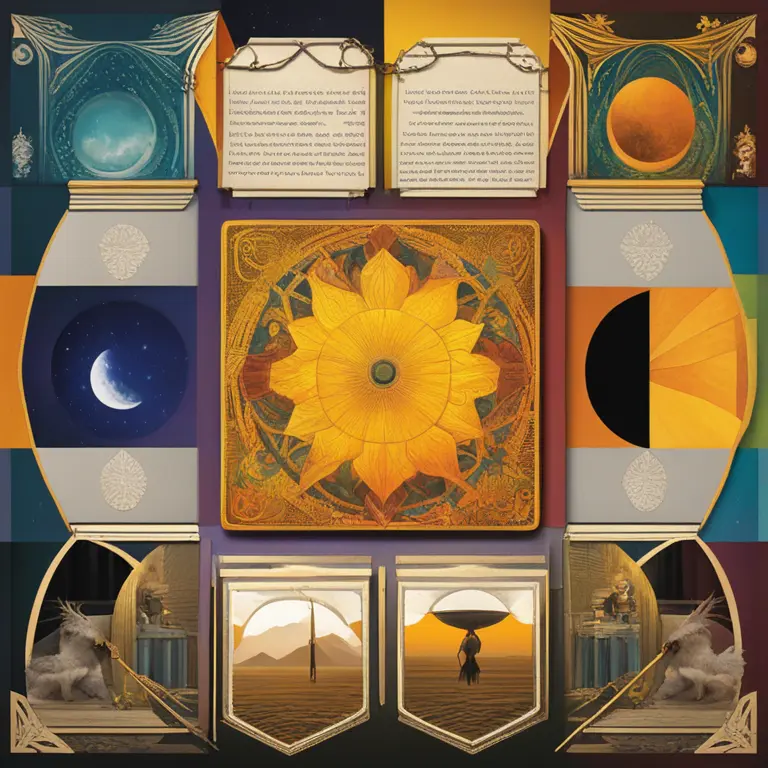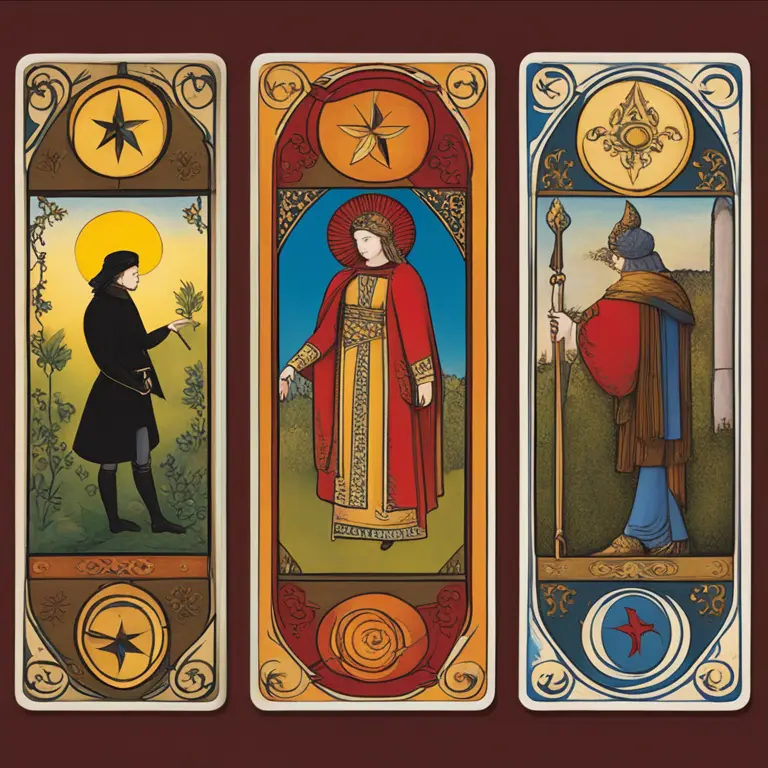
The Rich Tapestry of Tarot Visuals
The allure of tarot begins with its intricate artwork, a vivid tapestry that has evolved over centuries. Each deck is a gallery of symbols, colors, and figures, intricately designed to convey esoteric knowledge. The artwork doesn't merely serve a decorative purpose; it's the key through which the wisdom of the tarot speaks to both the reader and the seeker. As a palette, tarot cards blend historical, cultural, and mystical elements to create a visual language that transcends mere words, resonating with the subconscious and bringing forth the whispers of the inner self.

The Evolution of Tarot Imagery
Originally devised as a playing card system in 15th-century Europe, the tarot has undergone dramatic transformation. Early decks were hand-painted, accessible only to the aristocracy, while today's cards reflect a diversity of artistic styles—from classical to modern, abstract to representational. This journey of tarot art mirrors the shift in its use, from games to guidance, with the Rider-Waite-Smith deck, created in the early 20th century, setting the standard for many modern interpretations. Every artist since has had the opportunity to leave their unique mark on tarot's visual heritage, contributing to its endless metamorphosis.

Symbolism: The Language of Tarot
The potency of tarot art lies in its use of symbolic imagery. Each card is a complex aggregation of archetypal symbols, from the regal Empress, dripping in fertility symbolism, to the Wheel of Fortune, encircled by mythical creatures symbolizing the cyclic nature of fate. The symbols chosen are deliberate, carefully selected to invoke a range of interpretations that could apply across the broad tapestry of human experiences. These symbols act as mirrors that reflect an individual's situation, emotions, and potential, allowing guidance and introspection.

Connecting Art with Intuition
The true skill in reading tarot comes from marrying art interpretation with intuition. Seasoned tarot readers will see beyond the beauty of the illustration to uncover messages within the subconscious mind. This bridge between the seen and unseen worlds is where tarot art becomes a dynamic tool for personal insight. With each session, the interaction between the cards' imagery and the reader's intuition unfolds a unique narrative, specific to the seeker's journey. It affirms that tarot is not only an art form but a medium for channeling the intuitive self.
Contemporary Tarot Art Trends
As we look to 2024 and beyond, tarot art is embracing diverse and inclusive trends. Artists are re-imagining traditional symbols to resonate with a broader audience, reflecting various cultures, genders, and lifestyles. This new wave of tarot design serves to make divination a more inclusive practice, where everyone can see themselves represented in the cards they draw. Thus, the art of tarot becomes a living, evolving dialogue between tradition and contemporaneity, bound to continually inspire and guide.
Tarot Art as Collectibles
Besides their divinatory use, tarot decks have come to be appreciated as collectible artworks. Connoisseurs of tarot are as much drawn to the aesthetic value of the cards as they are to their mystical applications. Limited edition decks, collaborations with renowned artists, and handcrafted cards have turned tarot collecting into a passionate hobby for many. This trend underscores the significance of tarot art as a respected and beloved art form within the collector's world.
Published: 1/17/2024
Modified: 1/17/2024
More predictions
Come back here soon to learn more about yourself and your future


Do Tarot Cards Reveal Your Future Spouse?
Discover if tarot readings can provide insights into meeting your future spouse and how tarot symbolism unfolds the secrets of love and partnership.


Is He In Love? The Tarot Reveals
Delve into the world of tarot to discover if he harbors feelings of love for you — a mystical guidance to the matters of the heart.


The Importance of Tarot in Personal Insight
Discover the importance of Tarot in gaining self-understanding and navigating life's journey.